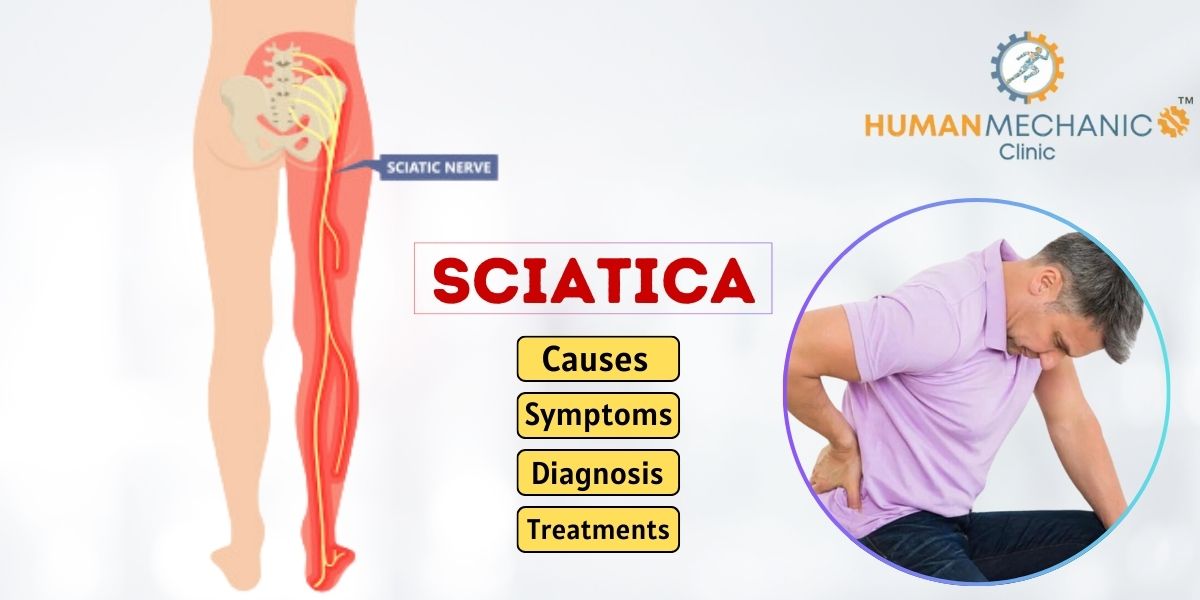Managing Sciatica Pain: A Physiotherapy Perspective
Sciatica pain management: A physiotherapy perspective Are you experiencing shooting pain down your leg, accompanied by numbness or tingling? You might be suffering from sciatica, a condition that can be debilitating if left untreated. Sciatica occurs when the sciatic nerve, which runs from your lower back down through your hips and buttocks and into each leg, becomes compressed or irritated. As a result, individuals often experience a range of symptoms that can significantly impact their daily lives. Symptoms of Sciatica While sciatica shares similarities with other conditions causing lower back and leg pain, several key symptoms differentiate it: Radiating pain – Sciatica typically manifests as a sharp, shooting pain that radiates from the lower back down one leg. This pain can vary in intensity and may worsen with movement or prolonged sitting. Numbness and tingling – Individuals with sciatica may experience numbness or tingling sensations along the affected leg, extending from the buttocks to the toes. Muscle weakness –Weakness in the affected leg muscles is another common symptom of sciatica. This weakness can make it challenging to perform daily activities like walking or standing. Possible Causes of Sciatica Pain Sciatica can arise from various underlying conditions, including: Herniated disc – A herniated or bulging disc in the spine can put pressure on the adjacent sciatic nerve roots, leading to sciatica symptoms. Spinal stenosis – Narrowing of the spinal canal, a condition known as spinal stenosis, can compress the sciatic nerve, causing pain and discomfort. Piriformis syndrome – The piriformis muscle, located in the buttocks, can sometimes irritate or compress the sciatic nerve, resulting in sciatica symptoms. Degenerative disc disease – Age-related changes in the spine, such as disc degeneration, can contribute to the development of sciatica. How Physiotherapy Helps Reduce Sciatica Pain: Physiotherapy plays a crucial role in the management and treatment of sciatica by addressing its underlying causes and providing targeted interventions to alleviate pain and improve mobility. Human Mechanic Clinic, a physiotherapy clinic in Hadapsar, specializes in effectively addressing the underlying causes of sciatica and providing personalized interventions to relieve pain and enhance mobility. Here’s how physiotherapy can help to manage sciatica pain: Individualized exercise programs: Physiotherapists design tailored exercise regimens to strengthen the muscles supporting the spine and improve flexibility. These exercises can help alleviate pressure on the sciatic nerve and promote healing. Manual therapy techniques Hands-on techniques such as spinal manipulation, mobilization, and soft tissue massage can help reduce pain, improve spinal alignment, and alleviate muscle tension associated with sciatica. Postural education and ergonomic advice Physiotherapists educate patients on proper posture and body mechanics to prevent exacerbation of sciatica symptoms. They may also offer guidance on ergonomic modifications in the workplace or during daily activities to reduce strain on the spine. Modalities for pain relief Physiotherapy modalities such as Matrix rhythm therapy, TECCAR therapy, LASER therapy, Shockwave therapy, heat therapy, and cold therapy, are used to provide pain relief and promote healing in individuals with sciatica. Conclusion: Living with sciatica pain can be challenging, but physiotherapy offers effective strategies for managing symptoms and improving quality of life. By addressing the underlying causes of sciatica and implementing targeted interventions, physiotherapists empower individuals to regain mobility, reduce pain, and restore function. If you are struggling with sciatica, and looking for sciatica treatment in Pune, consider consulting physiotherapists at Human Mechanic Clinic to develop a personalized treatment plan tailored to your needs. Don’t let sciatica hold you back—take the first step towards relief and recovery today. Blog Written By Dr. Pooja Pawar – Consultant Physiotherapist at Human Mechanic Clinic, Pune.


